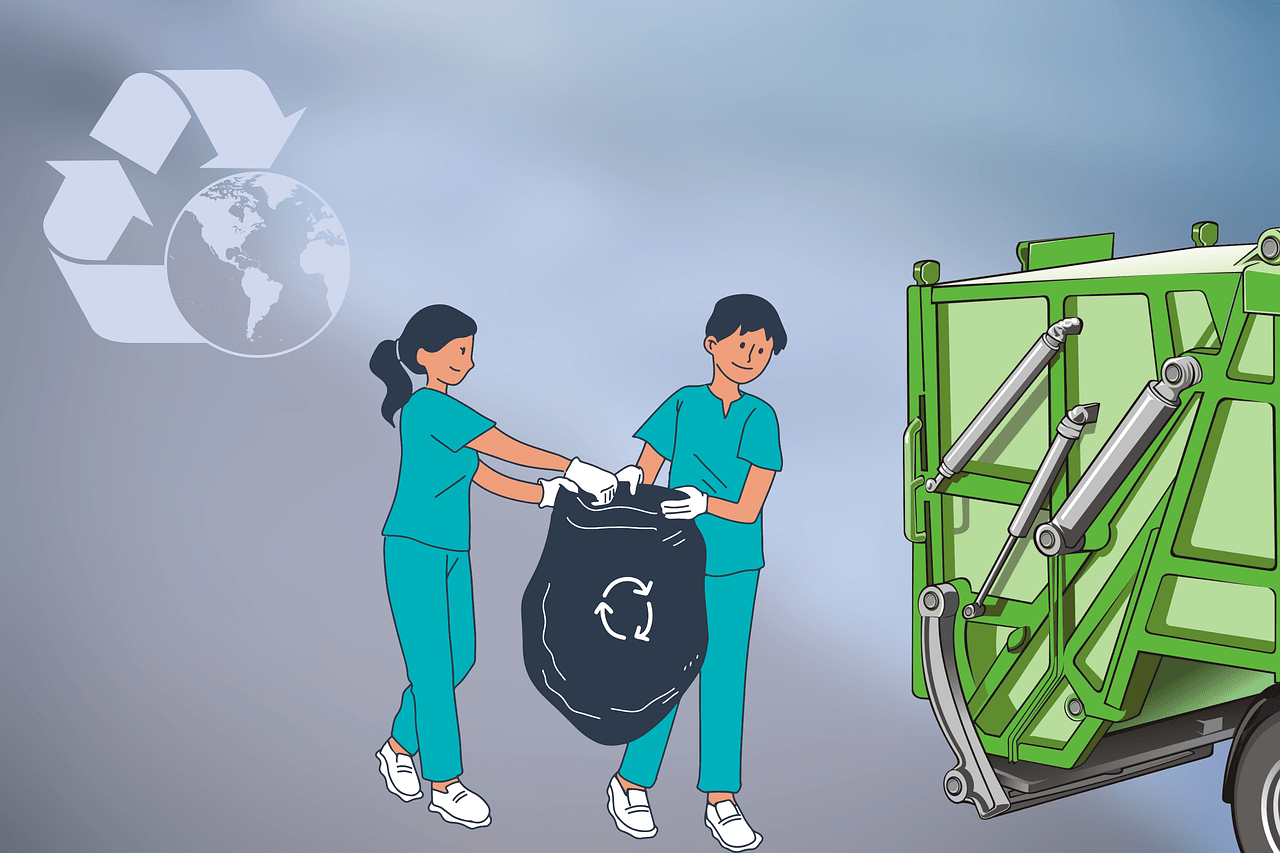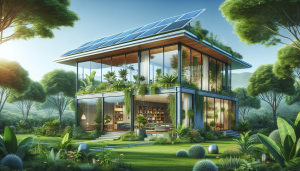In our quest for a greener planet, we’ve discovered that designing homes sustainably plays a crucial role in preserving our environment. By integrating eco-friendly materials, energy-efficient systems, and innovative architectural techniques into our living spaces, we can significantly reduce our carbon footprint. Sustainable home design isn’t just about the environment, though; it’s also about creating healthier, more cost-effective living conditions for ourselves. Let’s explore how we can make our homes a beacon of sustainability, benefiting both us and our planet. How Can Homes Be Designed Sustainably?
Have you ever wondered how we can design our homes to be more sustainable? It’s a question that resonates with many of us as we become increasingly aware of the environmental impact our lifestyles can have. In this article, we’ll dive into various strategies and considerations to help make our homes not only more eco-friendly but also efficient and healthier to live in.
What is Sustainable Home Design?
Sustainable home design focuses on maximizing the use of resources without compromising the environment or future generations. It incorporates energy-efficient systems, materials that have minimal environmental impact, and designs that promote healthy living conditions.
The Core Principles of Sustainable Design
Before diving into specific strategies, let’s discuss the core principles that guide sustainable home design:
- Energy Efficiency: Minimizing energy consumption through design.
- Resource Efficiency: Using materials that are renewable, long-lasting, and recyclable.
- Health and Wellbeing: Creating living spaces that are healthy and comfortable.
- Environmental Protection: Reducing pollution and promoting biodiversity.
- Economic Feasibility: Ensuring the cost-effectiveness of sustainable practices.
Energy Efficiency: Reducing Our Footprint
Energy consumption is one of the most significant factors in sustainable home design. Let’s look at some ways we can reduce our energy footprint.
Solar Power
Harnessing solar energy is a powerful way to make our homes more sustainable. By installing solar panels, we can generate our own electricity, reducing reliance on fossil fuels.
Energy-Efficient Appliances
Older appliances tend to be energy hogs. Replacing them with energy-efficient models can drastically reduce electricity consumption.
Smart Home Systems
Smart thermostats and lighting control systems can significantly reduce energy wastage. These devices allow us to program and control energy usage efficiently.
Insulation and Windows
Proper insulation and high-quality windows can reduce the need for heating and cooling, significantly lowering energy consumption.
| Energy Efficiency Feature | Description | Benefits |
|---|---|---|
| Solar Power | Installation of solar panels | Reduces reliance on fossil fuels, lowers electricity bills |
| Energy-Efficient Appliances | Use of modern, efficient appliances | Lowers energy consumption, reduces greenhouse gas emissions |
| Smart Home Systems | Programmable thermostats and smart lighting | Minimizes energy waste, optimizes consumption patterns |
| Insulation & Windows | Quality insulation and windows | Reduces heating/cooling needs, improves comfort levels |

Resource Efficiency: Making the Most of What We Have
Resource efficiency involves choosing materials and systems that reduce waste and are sustainable over the long term.
Sustainable Building Materials
Using renewable and recyclable materials is key. Options include bamboo flooring, recycled steel, and reclaimed wood.
Water Conservation
Efficient water use can be achieved through low-flow fixtures, rainwater harvesting systems, and greywater recycling.
Waste Reduction
Construction and household waste can be minimized by using pre-fabricated components and composting organic waste.
| Resource Efficiency Aspect | Description | Benefits |
|---|---|---|
| Sustainable Materials | Bamboo, recycled steel, reclaimed wood | Reduces environmental impact, promotes recycling |
| Water Conservation | Low-flow fixtures, rainwater systems | Lowers water usage, reduces strain on local water supply |
| Waste Reduction | Use of pre-fabricated components, composting | Minimizes landfill use, enhances resource recovery |
Health and Wellbeing: Creating Healthy Living Spaces
Our homes should be sanctuaries where we feel healthy and comfortable. Sustainable design can contribute significantly to our well-being.
Indoor Air Quality
Poor air quality can have serious health implications. Using non-toxic paints, installing effective ventilation, and using air purifiers can improve indoor air quality.
Natural Light
Maximizing natural light not only reduces electricity usage but also boosts our mood and productivity.
Thermal Comfort
Thermal comfort involves maintaining a consistent indoor temperature that is neither too hot nor too cold. This can be achieved through effective insulation, thermal mass, and passive solar design.
Noise Reduction
Soundproofing our homes using sustainable materials can create a peaceful, stress-free environment.
| Health and Wellbeing Aspect | Description | Benefits |
|---|---|---|
| Indoor Air Quality | Non-toxic paints, effective ventilation | Reduces respiratory issues, enhances overall health |
| Natural Light | Design maximizing sun exposure | Boosts mood, saves on electricity |
| Thermal Comfort | Consistent indoor temperature | Increases comfort, reduces energy needs |
| Noise Reduction | Soundproofing with eco-friendly materials | Creates a quieter, more relaxing environment |

Environmental Protection: Safeguarding Our Planet
Sustainably designed homes also focus on protecting the broader environment.
Reducing Carbon Footprint
Opting for energy-saving measures and renewable energy sources helps reduce our carbon footprint, combating climate change.
Promoting Biodiversity
Incorporating native plants into landscaping and avoiding harmful pesticides supports local ecosystems.
Sustainable Landscaping
Using xeriscaping techniques, which involve using drought-resistant plants and reducing lawn areas, can minimize water usage and promote biodiversity.
Stormwater Management
Implementing rain gardens and permeable pavement helps manage stormwater runoff, reducing the risk of flooding and water pollution.
| Environmental Protection Feature | Description | Benefits |
|---|---|---|
| Reducing Carbon Footprint | Use of renewable energy, energy-saving measures | Lowers greenhouse gas emissions |
| Promoting Biodiversity | Native plants, avoiding pesticides | Supports local wildlife, enhances ecosystem health |
| Sustainable Landscaping | Xeriscaping, reducing lawns | Conserves water, promotes diverse plant life |
| Stormwater Management | Rain gardens, permeable pavement | Mitigates flooding, reduces water pollution |
Economic Feasibility: Balancing Cost and Sustainability
Sustainable home design should also be economically viable. It’s essential that the benefits outweigh the costs over the long term.
Initial Investment vs. Long-Term Savings
While some sustainable features may have higher upfront costs, they often result in significant savings over time through reduced utility bills and maintenance costs.
Incentives and Rebates
Many governments and organizations offer incentives and rebates for sustainable practices, helping to offset initial costs.
Increased Property Value
Sustainably designed homes often have higher property values, making them a wise investment.
| Economic Feasibility Aspect | Description | Benefits |
|---|---|---|
| Initial Investment | Higher upfront costs, long-term savings | Reduction in utility bills, lower maintenance |
| Incentives & Rebates | Government and organizational offsets | Reduces initial financial burden |
| Increased Property Value | Higher value for sustainably designed homes | Better resale prospects |

Challenges and Solutions
Sustainable home design is not without challenges, but there are practical solutions to overcome these hurdles.
Perception and Awareness
Many people are unaware of the benefits of sustainable home design or perceive it to be more expensive. Education and awareness campaigns can help shift this perception.
Technical Knowledge
Builders and designers may lack the technical knowledge to implement sustainable practices. Investing in training and hiring specialized consultants can bridge this gap.
Compromise on Aesthetics
Some people believe sustainable homes lack aesthetic appeal. However, with the growing selection of eco-friendly materials and designs, it’s entirely possible to have a beautiful, sustainable home.
Financial Constraints
While some sustainable features can be costly, careful planning and prioritization can help achieve sustainability goals within budget constraints.
| Challenge | Solution |
|---|---|
| Perception & Awareness | Education and awareness campaigns |
| Technical Knowledge | Training and hiring specialized consultants |
| Aesthetic Concerns | Exploring diverse eco-friendly materials and designs |
| Financial Constraints | Careful planning and prioritization |
Moving Forward: Practical Steps to a Sustainable Home
So, how can we take actionable steps toward designing and living in a sustainable home? Here are some practical measures:
Conduct an Energy Audit
An energy audit can identify where our home is losing energy and provide recommendations for improvements.
DIY Projects
Small DIY projects like installing weather stripping, updating lighting to LEDs, or creating a compost bin can contribute to sustainability.
Consult Professionals
For larger projects, consulting architects and builders with expertise in sustainable design can be incredibly beneficial.
Stay Informed and Inspired
Continuously educate ourselves about sustainable practices and stay inspired by seeing what others have accomplished in this field.
| Practical Step | Description |
|---|---|
| Energy Audit | Identifies energy loss points, provides improvement suggestions |
| DIY Projects | Small-scale projects for immediate sustainability impact |
| Consulting Professionals | Engaging experts for larger sustainable designs |
| Continued Learning | Staying updated on sustainable practices |

Conclusion
Designing homes sustainably is not only beneficial for the environment but also enhances our quality of life and can be economically advantageous in the long run. By focusing on energy efficiency, resource efficiency, health and wellbeing, environmental protection, and economic feasibility, we can create homes that are truly sustainable.
So, let’s take these principles to heart and start transforming our living spaces into sustainable sanctuaries. After all, every step we take toward sustainability brings us closer to a healthier and more vibrant planet.
Thank you for joining us on this journey to explore how homes can be designed sustainably. Here’s to a greener, more sustainable future for all of us!



